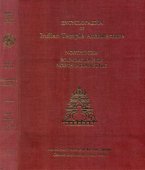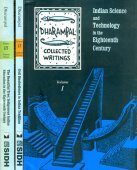Southern India: 1 definition
Introduction:
Southern India means something in the history of ancient India. If you want to know the exact meaning, history, etymology or English translation of this term then check out the descriptions on this page. Add your comment or reference to a book if you want to contribute to this summary article.
India history and geography
Source: archive.org: Cunningham’s Ancient Geography of IndiaSouthern India comprised the whole of the peninsula from Nasik on the west and Ganjam on the east, to Cape Kumari (Comorin) on the south, including the modern districts of Berar and Telingana, Maharashtra and the Konkan, with the separate states of Haidarabad, Mysore, and Travancore, or very nearly the whole of the peninsula to the south of the Narbada and Mahanadi rivers.

The history of India traces the identification of countries, villages, towns and other regions of India, as well as mythology, zoology, royal dynasties, rulers, tribes, local festivities and traditions and regional languages. Ancient India enjoyed religious freedom and encourages the path of Dharma, a concept common to Buddhism, Hinduism, and Jainism.
See also (Relevant definitions)
Partial matches: India.
Full-text (+255): Tamraparni, Calophyllum elatum, Garcinia travancorica, Dakshinadi, Athyrium falcatum, Dakshinapatha, Bemgaluru, Granthavari, Semecarpus travancorica, Croton malabaricus, Kumbhakona, Tomdamamdala, Caulika, Poroja, Onam, Telugu, Parji, Parja, Peddamma, Maremma.
Relevant text
Search found 70 books and stories containing Southern India; (plurals include: Southern Indias). You can also click to the full overview containing English textual excerpts. Below are direct links for the most relevant articles:
Maha Prajnaparamita Sastra (by Gelongma Karma Migme Chödrön)
Appendix 2 - The journey of the Buddha to southern India and Koṭikarṇa < [Chapter XV - The Arrival of the Bodhisattvas of the Ten Directions]
Appendix 9 - Identification of the Dharma teacher ‘Kao Tso’ < [Chapter XIV - Emission of rays]
Part 5 - What is the absolute point of view if the views are all false < [Chapter I - Explanation of Arguments]
Temples in and around Madurantakam (by B. Mekala)
Antiquity of Kanchipuram < [Chapter 1 - Historical Backdrop]
Kakatiya Rule at Kanchi (AD 1316) < [Chapter 1 - Historical Backdrop]
The Siva Brahmanas < [Chapter 6 - Social and Economic Activities]
Dasarupaka (critical study) (by Anuru Ranjan Mishra)
Part 1 - Mahendravarman—Author of the drama (Mattavilāsa-Prahasana) < [Chapter 3 - Prahasana (critical study)]
Impact of Vedic Culture on Society (by Kaushik Acharya)
Prospects of Future Research < [Chapter 6]
6. Sacrifices With Political Significance < [Chapter 2]
Introduction < [Chapter 1]
The Rock-Cut Cave Temples in Trichinopoly < [September-October 1931]
War-Songs from the Tamil Classics < [April 1940]
Marathi Poets of Southern India < [July 1939]
Indian Medicinal Plants (by Kanhoba Ranchoddas Kirtikar)
33. Uvaria narum, Wall. < [Annonaceae (custard apple family)]
Related products

